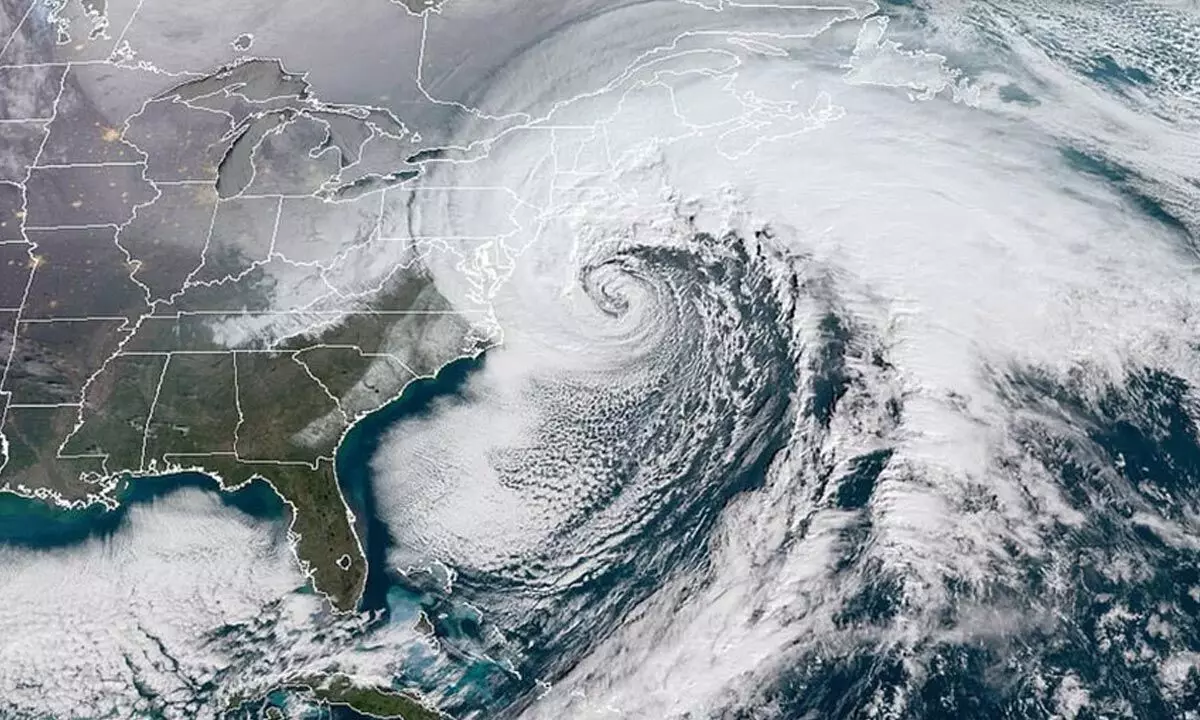Tracing moisture source of cyclonic storms
Cyclone Sitrang may have spared India and devastated coastal Bangladesh. But one must remember that cyclones are increasingly becoming perilous to the coastal populations of the subcontinent.
image for illustrative purpose

Cyclone Sitrang may have spared India and devastated coastal Bangladesh. But one must remember that cyclones are increasingly becoming perilous to the coastal populations of the subcontinent. Climate change thanks to global warming projects that the frequency of category 4 and 5 storms (60 to above 70 m/s sustained wind speed) will be doubled by the end of the 21st century. That's what the experts say. However, the question remains: why some cyclones are devastating while others are not? What controls the intensity of cyclonic winds and rains? Cyclones are gigantic vortex, 500-700 km in diameter and 20 km in height, which form when sea surface temperature is higher than normal. They get their energy from evaporation of the underlying sea-waters, forming spirally rotating rain bands around the centre called eye where the winds are strongest. The latent heat released during conversion of vapour to rain acts as fuel and the raining vortex moves on. However, one critical question has been bothering scientists: What is the exact mechanism and the source that supply moisture to the cyclone? Is it evaporation alone from the sea beneath, or the pre-existing atmospheric vapours? A recent joint work by scientists from IIT Kharagpur and Institute of Earth Sciences, Academia Sinica, Taiwan, seems to have been able to get the answer to this.
Going by the study, West Pacific Ocean waters are the warmest in the world, produce nearly 30 per cent cyclones of the world that routinely devastate Taiwan, China and Japan. There can't be any better place to study the internal mechanism of these cyclones. In Chinese the cyclones are called 'Typhoons'(daaihfùng) meaning 'great wind.' The experts at IIT-KGP and the Taiwanese Institute studied four such typhoons, named Nepartak, Meranti, Malakas and Megi of category 4/5 those devastated Taiwan in a single year of 2016. Billions of dollars of properties and lives were damaged, but the events gave the experts the opportunity to study, research and analyse. The research paper has just been published in prestigious 'Journal of Geophysical Research Atmospheres' of American Geophysical Union.
Cyclones are extremely dynamic systems and rainfall as high as nearly 150 mm per hour is very common. As the cyclone moves, shedding of this enormous amount of rain causes a progressive reduction in the ratio of the isotopes of oxygen and hydrogen in the leftover vapor mass. The experts tracked this magnitude of reduction, calculated and modelled to see how much rains were scavenged by these moving cyclones.
The study indicates that the cyclone movement through the atmosphere continuously scavenges the existing vapour over the vortex cross-section much like a moving suction pump and provide the first experimental evidence of a theoretical model suggested by Russian atmospheric scientists.
Since both cyclone frequency and intensities are increasing due to on-going climate change, this observation will be very important while studying the tropical cyclones that recurrently hit both India and Taiwan-Japan region. It has also opened up avenues for future collaboration between the two countries in such critical areas.

